Common Name(s): Afzelia, doussie
Scientific Name: Afzelia spp.
Distribution: Tropical Africa (other species are also found in Asia)
Tree Size: 80-120 ft (25-37 m) tall,
3-5 ft (1-1.5 m) trunk diameter
Average Dried Weight: 50.1 lbs/ft3 (805 kg/m3)
Specific Gravity (Basic, 12% MC): .67, .80
Janka Hardness: 1,810 lbf (8,050 N)
Modulus of Rupture: 17,740 lbf/in2 (122.3 MPa)
Elastic Modulus: 2,094,000 lbf/in2 (14.44 GPa)
Crushing Strength: 10,750 lbf/in2 (74.1 MPa)
Shrinkage: Radial: 2.3%, Tangential: 3.9%,
Volumetric: 6.3%, T/R Ratio: 1.7
Color/Appearance: Heartwood is a reddish brown. Well defined sapwood is a pale yellowish white. Color tends to darken with age. Most pieces of African afzelia occur as unfigured lumber, while burls and figured pieces with pommele or blister figure are usually Asian afzelia species sold under the name afzelia xylay.
Grain/Texture: Grain is interlocked with a uniform medium to coarse texture; naturally lustrous.
Rot Resistance: Rated as very durable. Moderately resistant to termites and marine borers, and variously resistant/susceptible to other insect attacks.
Workability: Generally considered somewhat difficult to work on account of its interlocked grain, causing tearout during machining operations. Afzelia also has a pronounced dulling effect on cutters. Gluing and finishing can be variable, and some species contain water-soluble yellow deposits in the pores which can pose challenges in staining or finishing with water-based products.
Odor: No characteristic odor.
Allergies/Toxicity: Although severe reactions are quite uncommon, afzelia has been reported to cause skin, eye, and respiratory irritation, as well as sneezing. See the articles Wood Allergies and Toxicity and Wood Dust Safety for more information.
Pricing/Availability: Prices for clear lumber tend to be moderate for an imported hardwood, though figured wood and burls are much more expensive.
Sustainability: Afzelia species are listed in CITES Appendix II under the genus-wide restriction of all Afzelia species from Africa. Also, a handful of African species in the Afzelia genus are on the IUCN Red List. Afzelia africana, A. bipindensis, and A. pachyloba are all listed as vulnerable, while A. bella and A. parviflora are reported as being species of least concern.
Common Uses: Furniture, cabinetry, veneer, flooring, docks, boatbuilding, exterior millwork and construction, turned objects, inlays, and other small specialty wood items.
Comments: Sometimes sold under the name doussie, afzelia has been compared to both mahogany and teak for its attractive appearance, durability, and stability.
As a commercial timber, afzelia is much more frequently exported from Africa, though some highly figured pieces of afzelia from Asia are also seen on the international market—usually bearing the name afzelia xylay or xylay lace. Most afzelia burls are also of Asian origin.
Images: Drag the slider up/down to toggle between raw and finished wood.
A special thanks to Justin Holden for providing a wood sample of this wood species.
Identification: See the article on Hardwood Anatomy for definitions of endgrain features.
Porosity: diffuse porous
Arrangement: solitary and radial multiples
Vessels: large to very large, few to very few; yellowish brown heartwood deposits present
Parenchyma: vasicentric, lozenge, confluent, and marginal
Rays: narrow, normal spacing
Lookalikes/Substitutes: Afzelia is closely related to merbau (though now in the Intsia genus, merbau was formerly placed in the Afzelia genus). Merbau generally has a darker heartwood color and conspicuous yellow mineral deposits.
Notes: Much like chanfuta (another African species of Afzelia), heartwood is weakly fluorescent, but not consistently so. Asian species of Afzelia tend to display a stronger and more consistent fluorescent response.
Related Content:

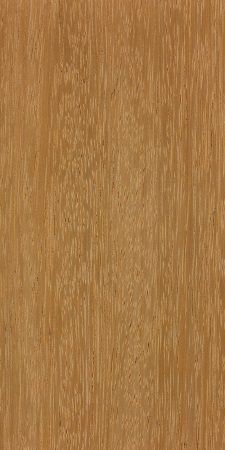
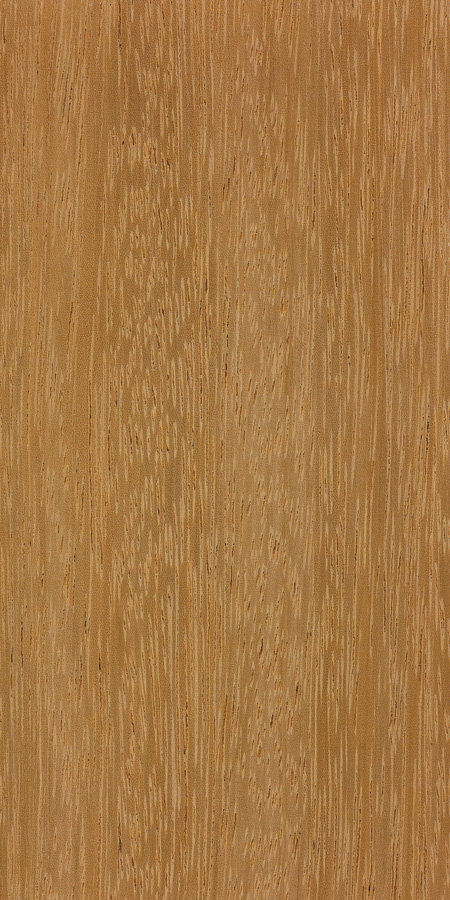
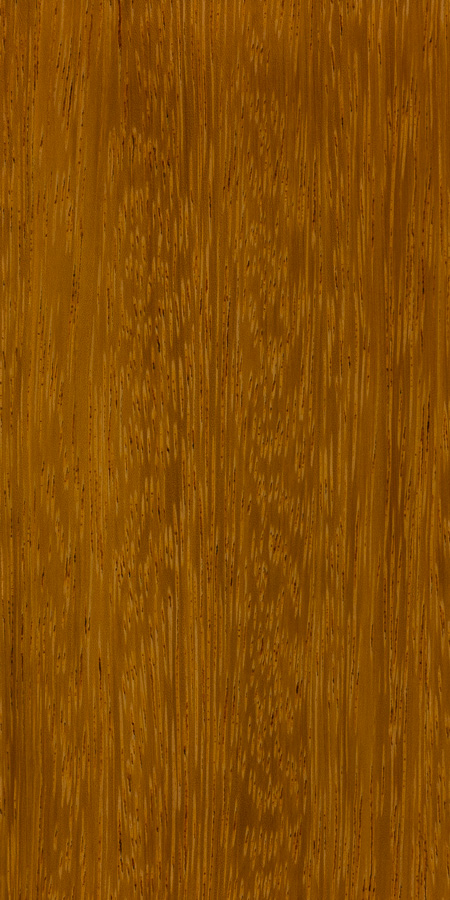
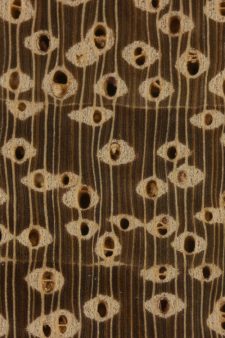

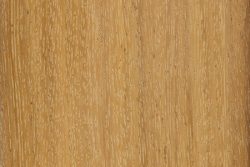
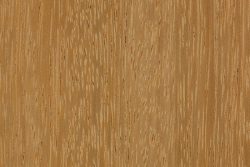
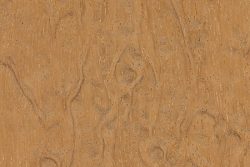
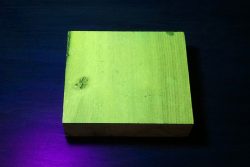
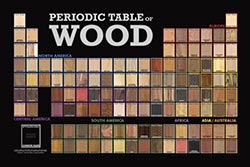
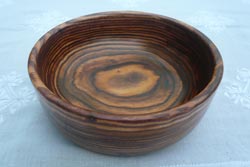





The Tindalo wood (Afzelia rhomboidea) we have here in the Philippines is red when freshly cut then darkens upon exposure and as it age. It’s also a very lustrous wood – superior to Narra.
So I’ve been trying to ID a species of lumber I’ve gotten imported from the Philippines but the dealer cannot give me a formal name … He says the people in the Philippines call it “dangai”. I’ve attached a couple pictures and see if you can ID this for me …Im left scratching my head. The reason I got it is because it’s a reddish colored wood….it sounds like a afzelia species. It DOES secret an oil/sap through the pores as shown in the one picture..the wood looks like it has wet spots. Any help is appreciated. I posted a… Read more »
Last pic screams Bubinga
I’m trying to find out it’s (afzelia,doussie) tonal properties as it’s used in harmonicas as combs. I’m just curious as to why the Hohner harmonica co. uses it, I’m sure it has to do with tone, and durability, though not positive what the exact reason. They use bamboo, and pear wood also, so just curious what the reasons are, if anyone knows…..
Different tastes. Warmer or brighter tones most likely.
take look at volumetric shrinkage one of the lower value
maybe the reason
Afzelia burl is one of the best burl over the world, am I right? The “ray cell” within its burl is the focus. And of course, the price of Afzelia burl is same to or even higher than Amboyna.